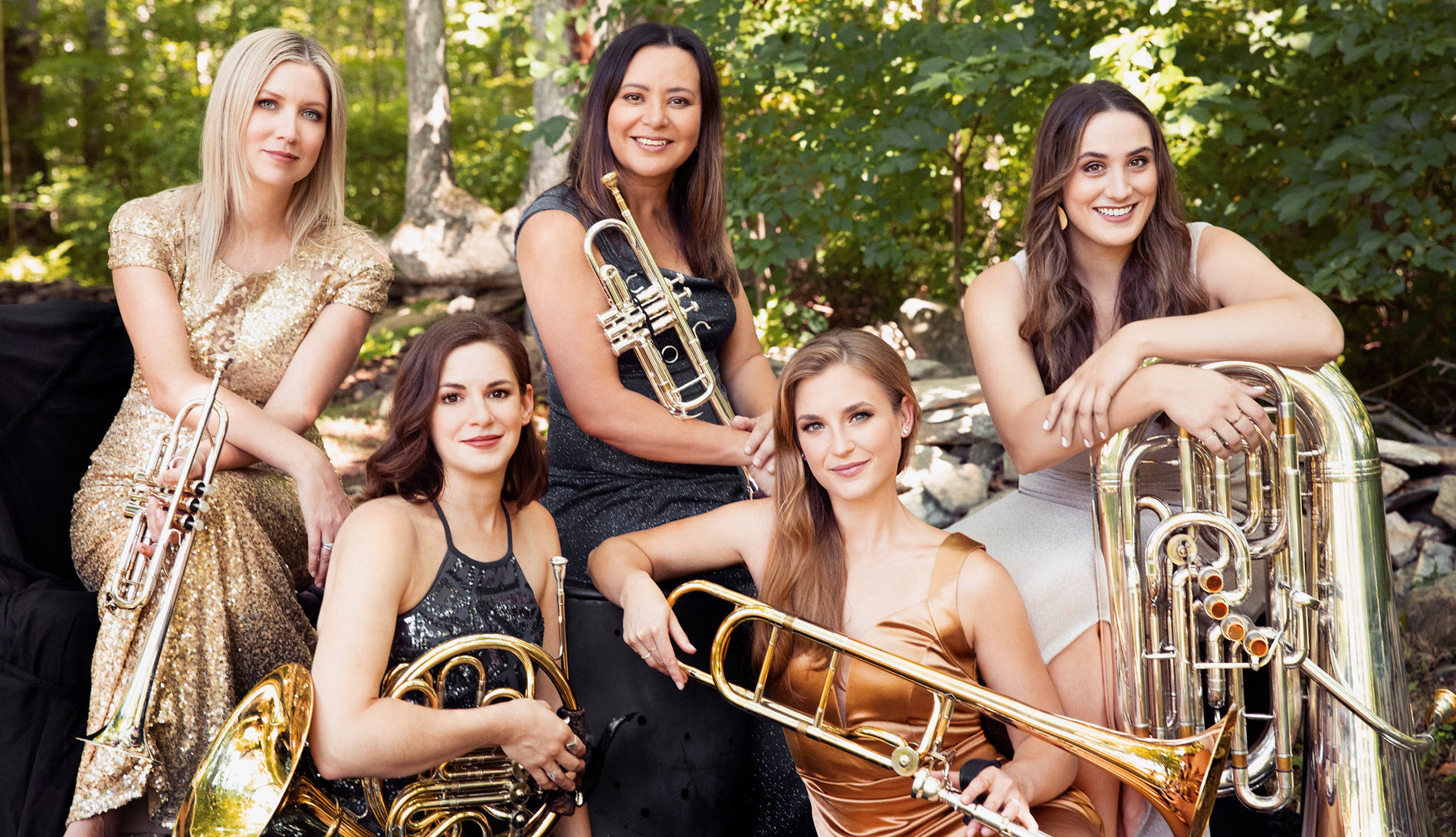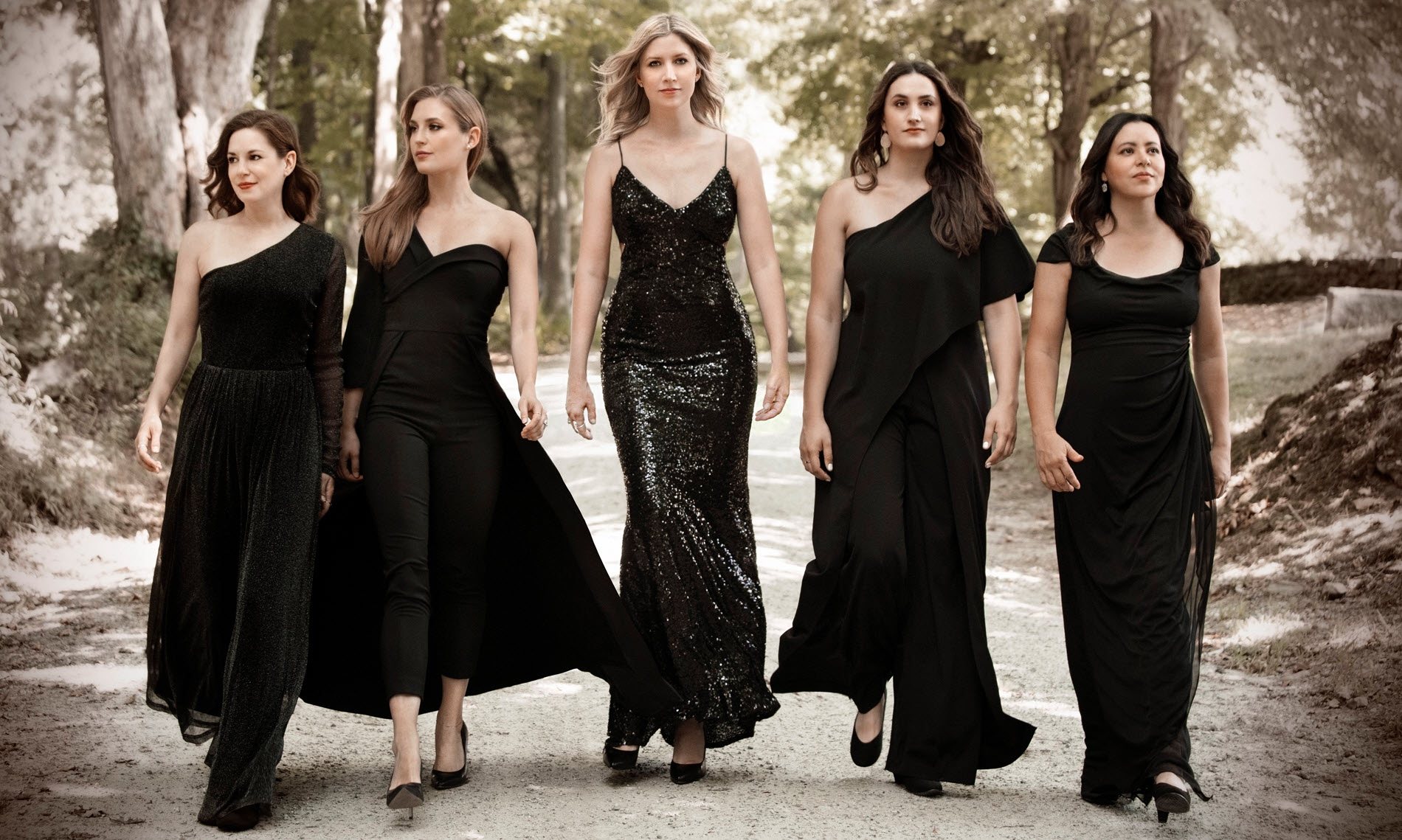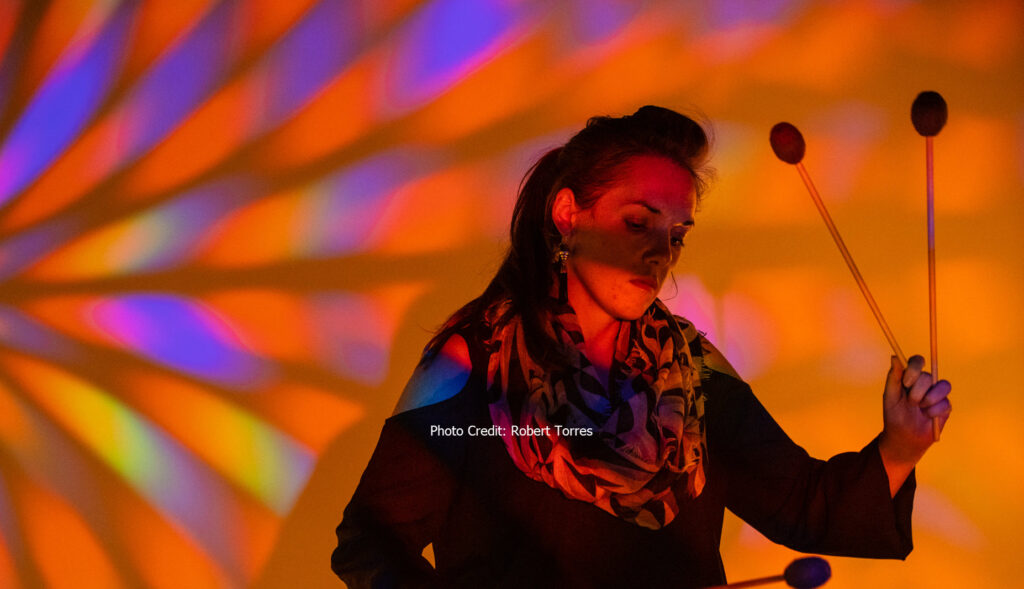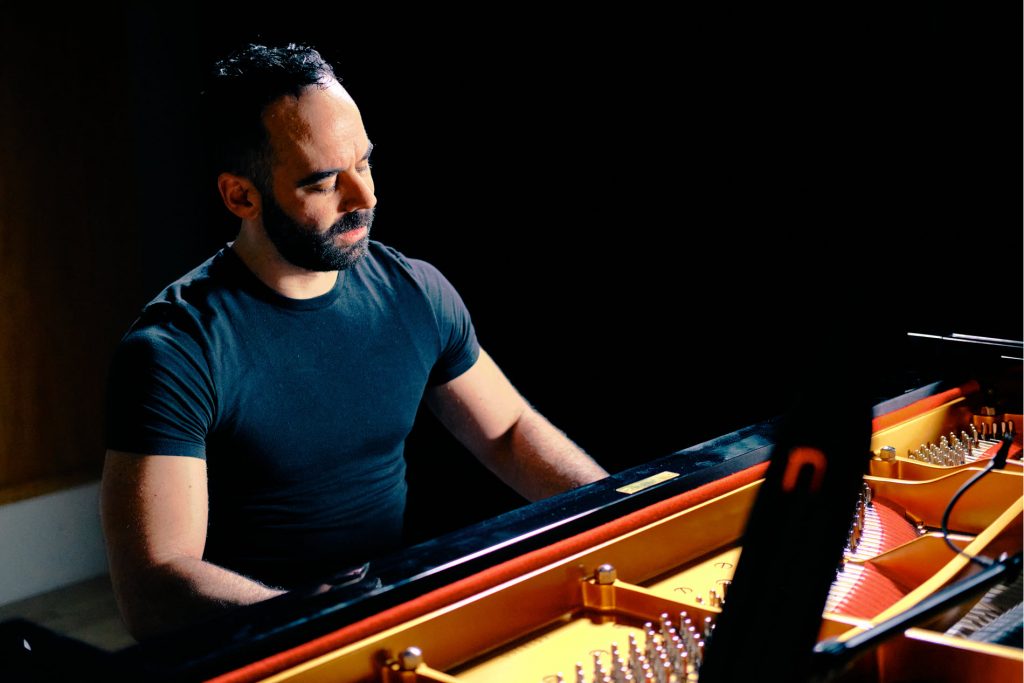Seraph Brass and the Next Generation of Female Wind Players
Yamaha trumpet artist Mary Elizabeth Bowden on founding the all-women group.
Mary Elizabeth Bowden wasn’t brought up to think she had to do things by the book. Growing up in Chicago in the 1990s, she watched her two older brothers take up the trombone and horn before she herself started playing at age 10. Although her father and mother weren’t musical themselves, they went all-in on their children’s interest.

Bowden’s first instrument was a professional-level Yamaha cornet, and all three siblings took private lessons from respected horn player Tim Jones, who brought them to classical and chamber music concerts in the Chicago area. By the time she was 13, Bowden had switched to trumpet and knew music would become her career. At 14, she left traditional schooling to attend Joliet Junior College while playing principal trumpet in the Chicago Youth Symphony. After earning an associate’s degree at the age of 16, she began studying at the Curtis Institute of Music and the Yale School of Music, launching an orchestral career and landing a place in the Richmond Symphony.
By her late twenties, though, Bowden had started to feel she wanted something different. In 2011 she started the Chrysalis Chamber Players, a Florida-based non-profit ensemble that she still participates in today. She’s since performed as a soloist or in chamber groups across the United States, Finland, Switzerland, China, South Korea and other countries, releasing two solo albums: Radiance and Rêverie. She also played with Adele on the artist’s 2016 tour of North America.

Bowden’s defining contribution to the music world, however, might be Seraph Brass — the all-female quintet she founded in 2014. Besides showcasing the upper echelon of female brass players on the scene today, Seraph Brass is known for commissioning new works from composers representing underrepresented groups, including women. A Yamaha Performing Group, the ensemble released its first album, Asteria, in 2018. With the group now in its ninth season, Bowden talked with us about the unique background that launched her career, the inspiration behind Seraph Brass, and her advice for women making their way in music.
It seems unusual that although your family wasn’t highly musical, they started you on a professional-level instrument. Why do you think they did that?
My parents were very supportive of anything [my brothers and I] wanted to try. They felt that if we were going to do something, they should give us the best shot at it. I’m grateful to them for starting me on such a great instrument — and I still treasure that instrument to this day.
You became very independent at a young age, taking college courses and playing in high-level ensembles — even finding time to work and earn spending money on the side. How did that affect you growing up?
My parents raised us to be independent and able to take care of ourselves. They were supportive of unconventional ideas, and that approach to my schooling allowed me to put more time into practicing, attending concerts, and just becoming immersed in music and able to put in the time I needed on the instrument. My brothers had done the same thing — leaving high school for community college — so we were able to go to school together. They were my best friends, and we went to concerts together and really bonded over that.
That outside-the-box thinking was very inspiring for me. The skills that I was learning at a young age helped me to become very entrepreneurial. When I decided in my twenties to go from an orchestral career to becoming a soloist and forming Seraph Brass, I had the practical skills to make that switch. You can be a phenomenal player, but it takes more than that to succeed in a music career.
What inspired you to found Seraph Brass?
I think it was an observation that most of the chamber music groups I had heard at that point were all-male. I didn’t see that as a negative thing — it was just something in the back of my mind. I’d had some very influential women in my life when I was a teenager: I was very inspired by Barbara Butler, whom I’d seen perform around Chicago a lot. And my teacher at that age was Kari Lee, who was a strong role model for me and really taught me how to advocate for myself.
So the idea for Seraph Brass was always marinating somewhere in my brain. When I felt ready, after establishing myself as a soloist and coming together with the founding members, I said, “Let’s make this happen.”
Today, I’m the only founding member left. With any touring group, there is turnover because touring is quite intense; we do 60-70 concerts a year, and people’s lives change. But it’s been such a pleasure to work with the women that we’ve had in the group.

What’s your approach to selecting repertoire, and especially to commissioning new works for the ensemble?
Commissioning new works is something we’re all really passionate about. We’ve commissioned a number of new works by women and also by underrepresented folks. We’ve joined a number of consortiums to help bring some of those new works to life as well. We’ll soon be performing a concerto by Jennifer Jolley for brass quintet and wind ensemble, and will be adding a new work by Jeffrey Scott next season. Our programs are a mix of new pieces and classical favorites, [with] some arrangements handcrafted specifically for the group.
What are some of your proudest moments with Seraph Brass so far?
When we first started the group, I wrote down some goals and dreams in a notebook. I’d been following different brass festivals, and I really wanted to go to Finland for the Lieksa Brass Week, so I thought I’d contact the artistic director, trumpet player Jouko Harjanne, in maybe five years when we were more established. And then in 2016 he wrote to me on Facebook and invited us. That was a proud moment for me because I had worked so hard to make the group happen and keep it alive and have that privilege of performing in front of an audience. So when you reach one of your goals — and reach it early — it’s a proud achievement. We’ve now been to the Lieksa Brass Week twice, and we’re returning this summer.
What are some of your goals for the group and your career in general?
My goal is to keep commissioning more trumpet concertos, and to share them globally. I love traveling the world, so I have a bucket list of places [I want to visit]. I also want to bring my husband (fellow Yamaha trumpet artist David Dash) into the mix more — to do some recitals together, which is quite fun. Seraph Brass is working on our second album now, and we’re recording a new arrangement of Anthony DiLorenzo’s Chimera for brass quintet and wind ensemble with the United States Army Band known as “Pershing’s Own.” (Listen to a performance of Chimera with the U.S. Army Band.) So the projects keep coming, and I’m sure something new will pop into my mind that I haven’t even thought of yet — which makes things fun and interesting.
Why did you choose to be a Yamaha artist and make Seraph Brass a Yamaha Performing Group?
Starting that relationship with Yamaha made sense because that trumpet is like my voice. I fell in love with the sound and the ease of playing. I love working with the company’s technicians too — their craftsmanship is incredible. At one point I dusted off my original Yamaha cornet, and I remember my husband looking over at me and saying, “Oh my gosh — that’s why you sound the way you sound.” I think that richness of sound that was in my ear at age 10 is the basis of the sound I still try to find every day.
What was it like performing with Adele?
It was a really interesting experience. She hired all female players for the tour, and some of the Seraph Brass ladies were on it for about 12 shows. It was fascinating to see how much goes on behind the scenes of such a large production — it made me grateful that I just have to set up my trumpets and stands! Plus I don’t know how Adele sang so many shows in a row, just belting the whole time. It was very impressive, knowing how draining tour life can be.
What would be your advice to young women seeking careers in music?
My advice would be, first, pick an instrument you feel connected to. My niece, who’s nine years old, just chose the trombone — she has my brother’s very first Yamaha trombone. I’d also tell them to think that anything is possible, and not to let anyone tell you what you can’t do.
As far as pursuing a career in music, remember that careers look different for every individual. Even if music isn’t what you do 100% of the time — my two brothers are computer programmers — that doesn’t mean you can’t create and learn and share it. If you really love music, you’ll want to grow every day, and you’ll enjoy the challenge of improving and making art and having interesting experiences. And I think it’s important to stay curious.
MORE ABOUT THE MEMBERS OF SERAPH BRASS
Raquel Samayoa leads a multi-faceted career as a teacher, chamber musician, recitalist, adjudicator and solo performer. She joined the University of North Texas College of Music in 2018, where she is currently Associate Professor of Trumpet, and Co-Conductor of the UNT Brass Band. Dr. Samayoa is also a founding member of Lantana Trio, a brass trio composed of UNT Brass Faculty.
Layan Atieh is a member of the Civic Orchestra of Chicago and regularly performs with the Cleveland Orchestra as well as coaching the Cleveland Orchestra Youth Orchestra (COYO). She completed her undergraduate studies at the Peabody Institute under the tutelage of Robert Rearden, and received her Master’s degree from the Cleveland Institute of Music.
Lauren Casey-Clyde is an active freelancer, educator, chamber musician and soloist who has performed with the Boston Symphony Orchestra, Austin Symphony Orchestra, Austin Opera, Temple Symphony Orchestra, Central Texas Philharmonic, Waco Symphony Orchestra, Cambrian Symphony Orchestra and Round Top Festival Orchestra.
Robyn Black is currently the Principal Tuba of the Milwaukee Symphony, a position she won at 18 years old. She regularly performs with music festivals such as the Lakes Area Music Festival and the Artosphere Festival Orchestra. As an undergraduate, she studied at Rice University with Dave Kirk.
Photos: Lisa-Marie Mazzucco
Find out more about Seraph Brass and Mary Elizabeth Bowden.















